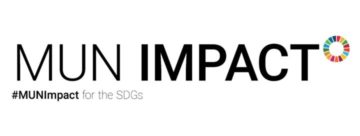MUN debates are excellent at coming up with ideas and initiatives, but a lot of those ideas get left behind and never get implemented. However, two MUN delegates, Ella and Vivian break that norm by taking their passion for MUN beyond conferences and debate to their initiative, Project Aquascope. The project, which is based on three pillars, Environmental Sustainability, STEM Education, and Youth Empowerment, aims to make education and innovation accessible to all. All three of those pillars were very present in the talk.
The project originated from the STEM (Science, Technology, Engineering, and Mathematics) orientated initiative, Project Foldscope, which aimed to solve an accessibility problem in science through the creation of an affordable $1 origami microscope which helped make STEM education widely accessible. However, Ella and Vivian decided to change the focus of the project to be more environmentally orientated. Project Foldscope had made massive advances in lowering boundaries in STEM, but the duo believed a re-evaluation was necessary to make Project Foldscope even more successful. This was particularly evident on a trip to Panama where Ella and Vivian found that students were more interested in the microscope than the actual science that they were supposed to be studying.
Upon a re-evaluation of the program, three traits were decided on to try to make STEM even more accessible to students. These are, Practical, Beneficial, and Engaging. These traits were important in getting students involved and helped lead them to find an aim for this redesigned program. Therefore, Project Aquascope aims to try and reduce food scarcity through Aquaponics, an innovative agriculture process where plants sit on top of fish tanks and as a result the plants draw nutrients from the animal waste in the tanks below them. This creates an organic method of fertilization for the plants and is very cost and space effective. Project Aquascope is also driven by the SDGs and the project’s Three Pillars can be linked very closely to the goals. This was important for Ella and Vivian as SDGs 4 & 10, in particular, have a very close relationship to them.
After a very informative description of their project, the talk then took a turn towards a more interactive workshop, focusing on their third pillar, Youth Empowerment. Some advice they gave to attendees was to talk to people about your ideas and take risks to get your projects running. Following some advice, a mix and match activity aimed to get participants thinking about how they could turn their passions and skills into projects which would help tackle the globes’ issues and could even be linked to the SDGs. For example, one idea turned a person’s interest in music and their passion for different cultures into a multicultural music festival with the focus of celebrating our diversity as humans.
Ella and Vivian’s workshop reminded attendees of the impact humans, and the youth, can have and served as an inspiration for many other MUN delegates to take their skills and ideas, and use them to make a difference for others.
_
By William W.
